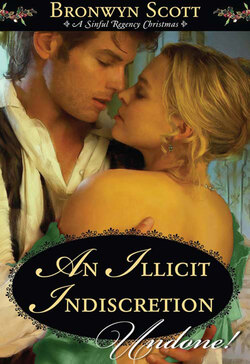Читать книгу An Illicit Indiscretion - Bronwyn Scott - Страница 5
ОглавлениеDear Reader,
Merry Christmas! I hope you love Elisabeth and Dashiell’s story. It’s a Christmas story in that it’s a tale of the things we associate with the season; hope and faith and love. Elisabeth gambles everything on her faith that the comet will be there and that her freedom is worth fighting for. Dashiell takes the biggest leap of faith of all in his search for love.
Their story is set around the 1835 return of Halley’s Comet. This return is significant because it is the third consecutive sighting of the comet using Newton and Halley’s calculations for determining its cyclical appearance, proving the reliability for the formula. Halley’s Comet has long been associated with the Christmas Season. Its 1758 return was confirmed Christmas night, 1758 and there’s been long speculation that the comet was the Christmas ‘star’ seen by the Three Wiseman, although that is highly debatable. Many scientists argue the comet’s return would have been twelve years too early to coincide the birth of Christ.
I do need to take a moment and share information about my resources. First, I found a great article from the Manchester Guardian, dated Sept. 1835 and written by a citizen concerning the best way to view the comet. He reported that he had only a mediocre Dolland telescope for viewing. He also reported in the article, the best viewing times and where in the galaxy to spot the comet. I used that information in Elisabeth’s December sightings, even though the position of stars would have shifted between August and December.
The comet did pass perihelion on November 16th and it was lost to the eye for a time. It was ‘re-sighted’ in early January according to some records. This means, Elisabeth’s spotting of it in December is fictionalized by a week or two.
Comet pins were indeed a big rage that year so it was fitting that Dashiell give Elisabeth a comet pin as a gift. I found some lovely pictures of the jewelry on-line.
The advancements made in refractory lenses by 1835 made the study of comets quite scientific. The 1835 sighting allowed for the gathering data until then unknown.
England’s great astronomer, John Hershel, did set up ‘shop’ at the Cape for the duration and regularly reported a stream of visitors coming to take tea and see the comet.
Lastly, in terms of women astronomy, they were few and far between. But there were some. Elisabeth wouldn’t have been an anomaly. For instance, the first woman to discover a comet was Caroline Herschel in 1786 (she was the daughter of the man who discovered the planet, Uranus).
There’s so much more to say, but I’ll leave it at this: Merry Christmas, embrace your dreams.
Stop by my blog for holiday fun at www.bronwynswriting.blogspot.com
See you out there!
Bronwyn
